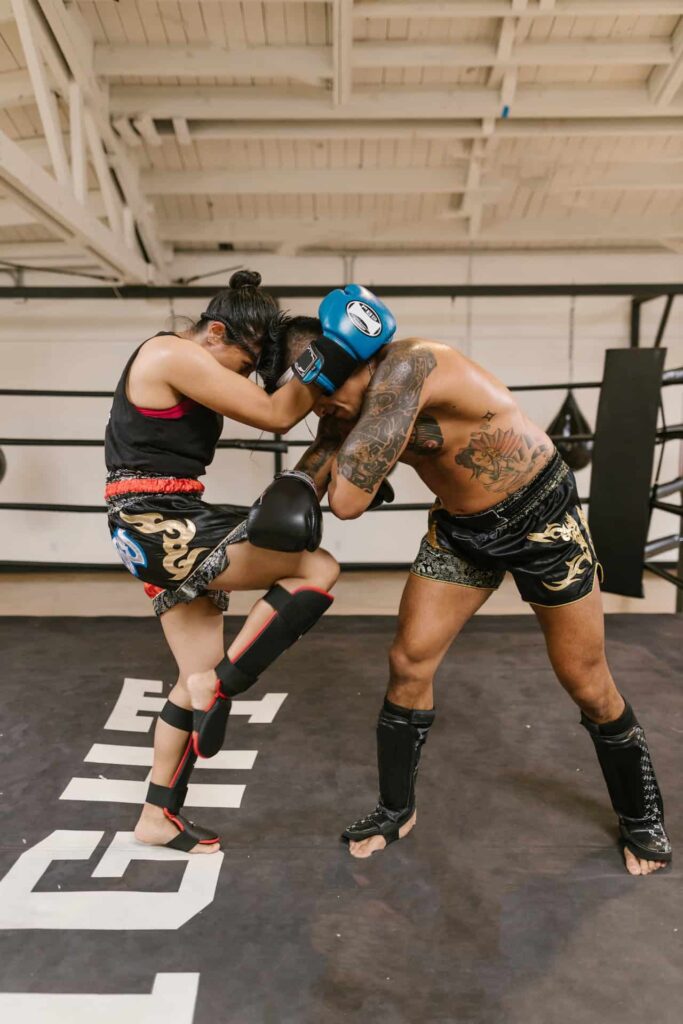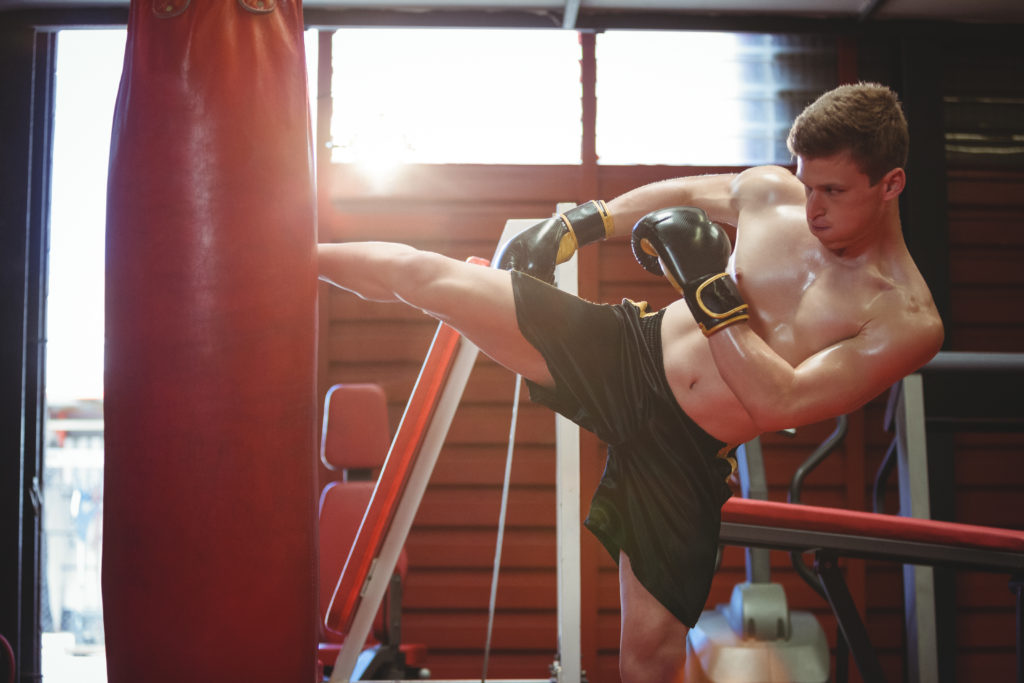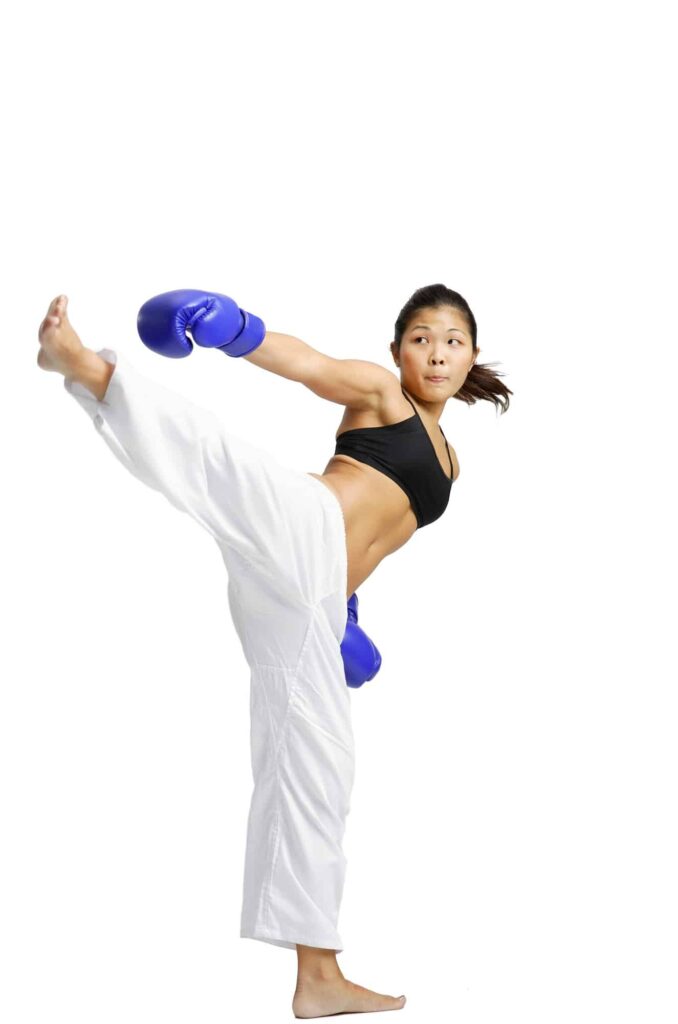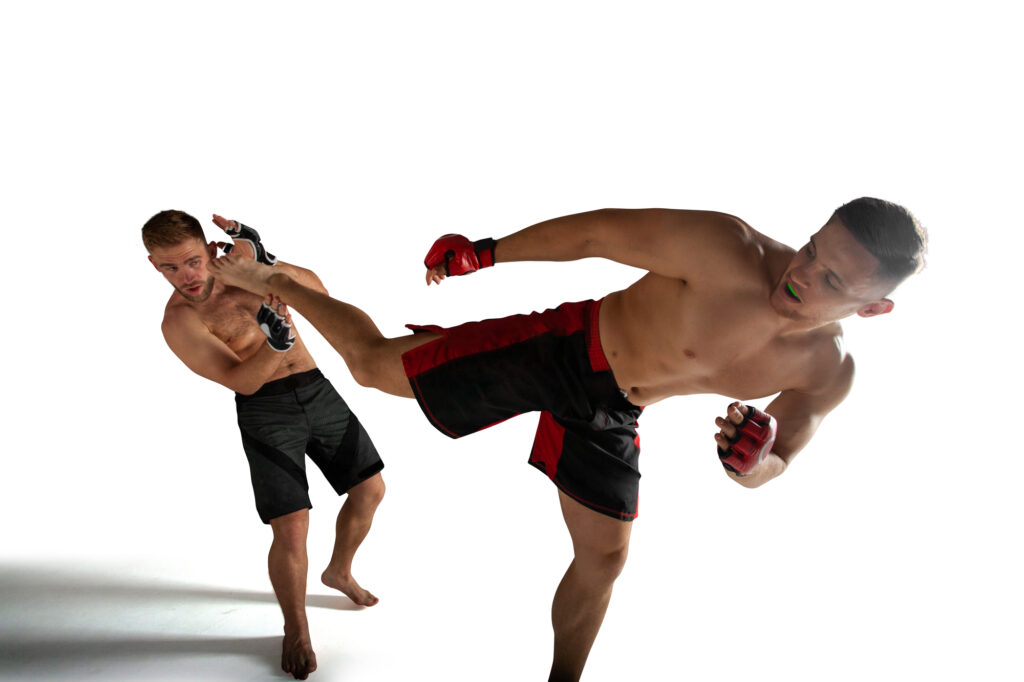What are the main differences when it comes to dutch kickboxing vs american kickboxing?
When it comes to the debate of which style is more effective dutch kickboxing vs american kickboxing, there is agreement that in today’s combat sport climate, that dutch kickboxing seems to have won the battle for supremacy.
But why has Dutch kickboxing proven to be more effective in combat sports and popularity in general?
In this post we look at the main differences when it comes to Dutch kickboxing vs American kickboxing and why the dutch style of kickboxing has remained one of the most effective styles when it comes to combat sports.
But first let’s take a look briefly at the styles and their origins which influenced the development of these two combat sport styles.

Dutch Kickboxing vs American Kickboxing: Origins
A major influence on the development of Dutch and American styles of kickboxing lie in the traditional martial arts that influenced their development and especially the training undertaken by the originators of these two distinct styles of kickboxing.
Dutch Style Origins
Dutch kickboxing has it’s origins in Kyokushin Kararte and Muay thai.
Dutch kickboxing also kown as Dutch style muay thai emerged as a distinct fighting style in the 1970s and 1980s.
The style came about through Dutch martial artists and kickboxers who trained and competed in various disciplines, including Karate, boxing, and traditional Muay Thai from Thailand.
During that time, several Dutch fighters traveled to Thailand to learn Muay Thai and brought back their knowledge and experiences to the Netherlands.
They combined the techniques and strategies of Muay Thai with their existing skills, resulting in the development of a unique style that became known as Dutch kickboxing.

Dutch kickboxing gained prominence in the Netherlands and gradually spread to other parts of Europe and the world.
It became renowned for its aggressive and relentless fighting style, incorporating a combination of punches, kicks, knees, and elbows.
The Dutch kickboxers achieved significant success in international competitions, such as the K-1 World Grand Prix, further popularising the style and influencing the development of kickboxing globally.
American Kickboxing Origins
American kickboxing is thought to have developed from the influence of point scoring and full contact Karate tournaments in the US dating back to the 70s and 80s.
From the wide use of spinning type kicks and attacks in American kickboxing, Taekwondo is also seen as a contributing style in American kickboxing.
A major contributing factor the development of American kickboxing is thought to be the popularity of full-contact Karate tournaments in the United States during the 70s and 80s.
Promoters of these full-contact tournaments sought to create a new combat sport that would allow fighters from different martial arts backgrounds to compete against each other using a standardized rule set.
This led to the development of American kickboxing, which incorporated elements from different styles to create an exciting and competitive striking-based sport.
Main Differences Between Dutch and American Kickboxing
To the untrained eye, Dutch and American kickboxing appear very similar.
But there are key differences between the two styles that make them very distinct.
i) Fight Gear
In competitions back in the early days of American kickboxing i.e the 70s/80s, kickboxers were commonly seen to be wearing and competing in long pants.
These long pants could have their origins in the traditional long pants worn in full contact Karate tournaments and the Karat gi itself which includes long pants.

Dutch style however is known for wearing shorts or traditional muay thai shorts in competition.
ii) Techniques
Dutch style is known for aggressive Western boxing style punches combined with heavy low kicks.
American kickboxing is known for more spinning attacks and flashier kicks and spinning backfists.
Low Kicks
The Dutch style places emphasis on boxing and heavy hands in order to set up heavy low kicks and body kicks and is more similar to muay thai in this aspect.
American kickboxing in practice looks more similar to point scoring Karate and full contact Karate, the style from which its origins come from.
Also in American kickboxing style competition, often low kicks are prohibited in matches. So American kickboxing traditional did not place much emphasis on learning or training low kicks.
Clinch
The clinch (a major part of muay thai) also is a major difference between the two styles.
In Dutch kickboxing the clinch is a major part of fighting techniques although not as much as muay thai)
While in American kickboxing the clinch is not trained much or used much at all in competition. And many kickboxing tournaments do not allow clinching with the referee breaking up clinching fighters in an American kickboxing compeittion.
iii) Stance
The stance is another major difference between the two styles.
Dutch kickboxing favours more of a square stance similar to muay thai. But with the arms closer to the body to guard against body shots, rather than flared out as in the traditional muay thai stance.
The American kickboxing stance features a more side-on bladed stance much like that used in traditional Taekwondo or Karate competition that can be seen today in the Olympics.

This side on stance also allows for quicker spinning kicks to be thrown.
The more square Dutch stance allows for switch stances and for punches to be combined well with kicks in attacking combos.
iv) Rules Set
The rules of Dutch kickboxing and American kickboxing can vary.
Dutch kickboxing often follows the rules of K-1 kickboxing, which allows the use of knees and low kicks, permits clinching, and favors continuous action.
American kickboxing can encompass different rule sets, such as those used in professional organizations like Glory or amateur competitions like those sanctioned by the International Kickboxing Federation (IKF).
American kickboxing rules may have restrictions on certain techniques (such as clinching and low kicks) or variations depending on the specific event or organization.
v) Training
Training methods in Dutch kickboxing and American kickboxing may differ.
Dutch kickboxing training often involves rigorous conditioning, heavy bag work, focus mitt drills, sparring, and a significant emphasis on developing power and endurance.
American kickboxing training can include similar elements but may also incorporate a wider variety of techniques from other martial arts styles, such as kata forms or specific self-defense drills.
Dutch and American Kickboxing today
In today’s combat sport scene, American kickboxing is largely unseen, while Dutch kickboxing seems to be more popular than it ever was in the past.
A large part of this is the success of Dutch kickboxers on popular combat competitions such as K-1 as well as the success of Dutch kickboxers such as Alistair Overeem in the UFC.

Also the success of Dutch fighters such as Ramon Dekkers, Nick Holzkien and Andy Souwer have contributed to the popularity of Dutch style in combat sports today.
A major reason could be that Dutch style is more suited to MMA with its emphasis on heavy hands combined with brutal low and body kicks.
While spinning kicks are more difficult to land in a rule set that includes grappling and takedowns.
Dutch Kickboxing vs American Kickboxing – Final Thoughts
Both Dutch and American kickboxing are more modern styles of combats (from the 70s-90s) that originate from traditional martial arts like muay thai and Karate) and both have developed in different regions and with different techniques and fighting styles.
In todays modern combat sports competition, including MMA and K-1, Dutch style seems to have emerged as the more effective and popular style thanks to the success of world famous Dutch champions like Ramon Dekkers and Alistair Overeem.



